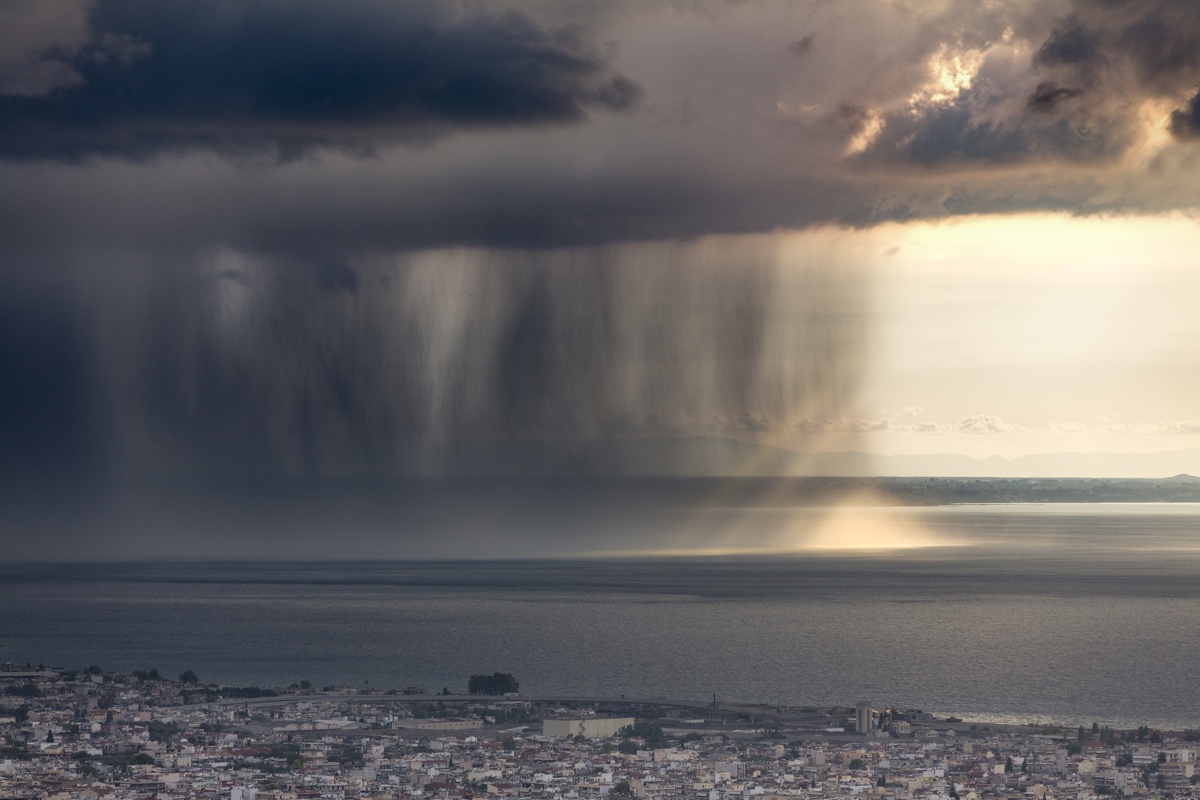Half of the Year's Rain Falls on Earth in Just 12 Days

It takes less than two weeks for half of the planet's annual precipitation to fall.
That is, 50 percent of Earth's rain, snow and ice each year falls in the 12 wettest days, according to a new study. The deluges are likely to become even more concentrated by the end of the century, researchers reported Oct. 19 in the journal Geophysical Research Letters. Researchers already know that climate change will likely lead to an overall increase in precipitation, study leader Angeline Pendergrass, a scientist at the National Center for Atmospheric Research (NCAR) in Boulder, Colorado, said in a statement. The new study suggests that this extra rain will fall in the least helpful way possible.
"What we found is that the expected increases happen when it's already the wettest — the rainiest days get rainier," Pendergrass said. [The 10 Driest Places on Earth]
Increasing extremes
Climate scientists have long been concerned that the increase in global average temperatures will cause weather events that are more extreme. Warmer air can hold more moisture, and a different study, published Nov. 14, found that today's hurricanes are already wetter due to climate change.
Quantifying the expected increase is harder, Pendergrass and her colleagues wrote in their new paper. It's particularly hard, they added, to describe the changes in an accessible, intuitive way. That's why the team decided to couch their findings in the number of days it takes to account for half of the world's annual precipitation. [Hurricane Sandy: Photos of a Frankenstorm]
The team used data from a series of weather stations in the Global Climate Observing System Surface Network; these stations are placed worldwide (though most are in North America, Eurasia and Australia, with Africa and South America less well-represented). These stations collect precipitation totals at particular spots. To expand the data regionally, the researchers also used satellite data from the Tropical Rainfall Measuring Mission. These sources gave the investigators overlapping data between 1999 and 2014.
Drought and floods
Already, the researchers found, most of the water that falls from the sky does so in a mind-bogglingly short period of time. It takes just 12 days to account for half the world's yearly annual precipitation, the researchers reported.
Get the world’s most fascinating discoveries delivered straight to your inbox.
"I would have guessed the number would be larger — perhaps a month," Pendergrass said.
The scientists found, instead, that a whopping 75 percent of the world's precipitation falls in approximately a month's time (the wettest 30 days, spread across the year). Twelve and a half percent of annual precipitation falls in just two days. And the wettest single day of the year accounts for 8.3 percent of the year's total.
Regionally, this tendency for a lot of wetness in only a short period of time is most obvious in dry, desert environments, the researchers found. China and southeastern Russia are right in the middle, and "wet" places like the northeastern United States show the most even distribution of precipitation.
Globally, the wettest day of summer accounts for 5.2 percent of the year's precipitation, while the wettest day of winter is a little drier, at 3.4 percent of the annual precipitation budget.
The researchers also modeled how this precipitation distribution will likely change as the globe warms. In a "business-as-usual" climate scenario, in which there is no attempt to reign in carbon emissions, half of the additional predicted precipitation would fall in the six wettest days of the year by 2100. And 50 percent of all precipitation would be crammed into 11 days, the researchers estimated. Precipitation would remain uneven in a "best-case" scenario, in which emissions begin to decline after 2020, the researchers found, but the difference from current conditions would not be not so extreme.
One key question, the researchers wrote, is when during the year these extreme precipitation events are likely to occur. The answer will have major implications for the impact of the changes, the scientists added: A deluge right before the growing season might be fine for plants and crops. A drought during the growing season followed by a downpour would spell nothing but trouble. Flooding could also become a more serious threat, Pendergrass added.
"We need to take this into account," she said, "when we think about how to prepare for the future."
- Weirdo Weather: 7 Rare Weather Events
- Photographic Proof of Climate Change: Images of Retreating Glaciers
- A History of Destruction: 8 Great Hurricanes
Originally published on Live Science.

Stephanie Pappas is a contributing writer for Live Science, covering topics ranging from geoscience to archaeology to the human brain and behavior. She was previously a senior writer for Live Science but is now a freelancer based in Denver, Colorado, and regularly contributes to Scientific American and The Monitor, the monthly magazine of the American Psychological Association. Stephanie received a bachelor's degree in psychology from the University of South Carolina and a graduate certificate in science communication from the University of California, Santa Cruz.
